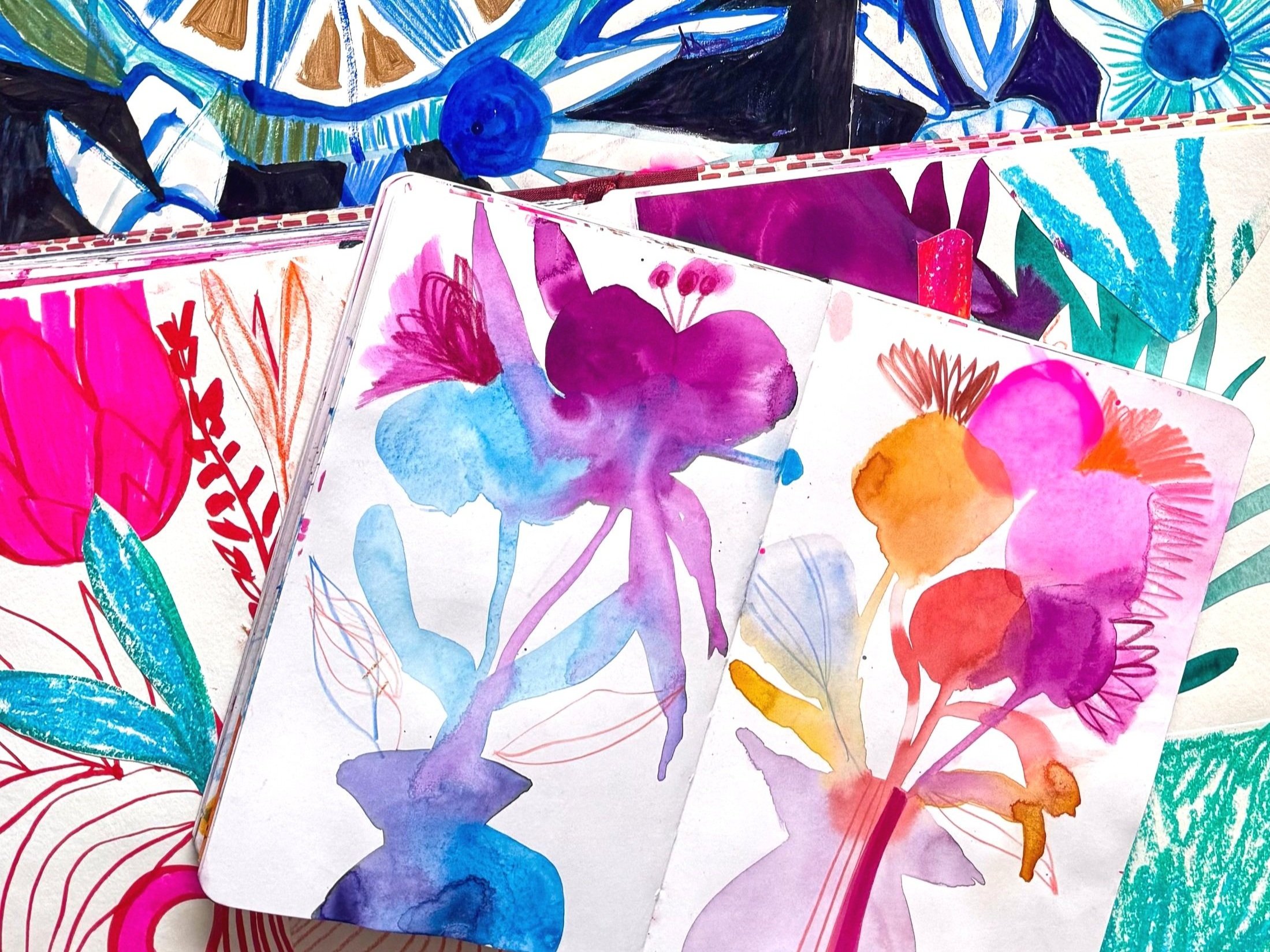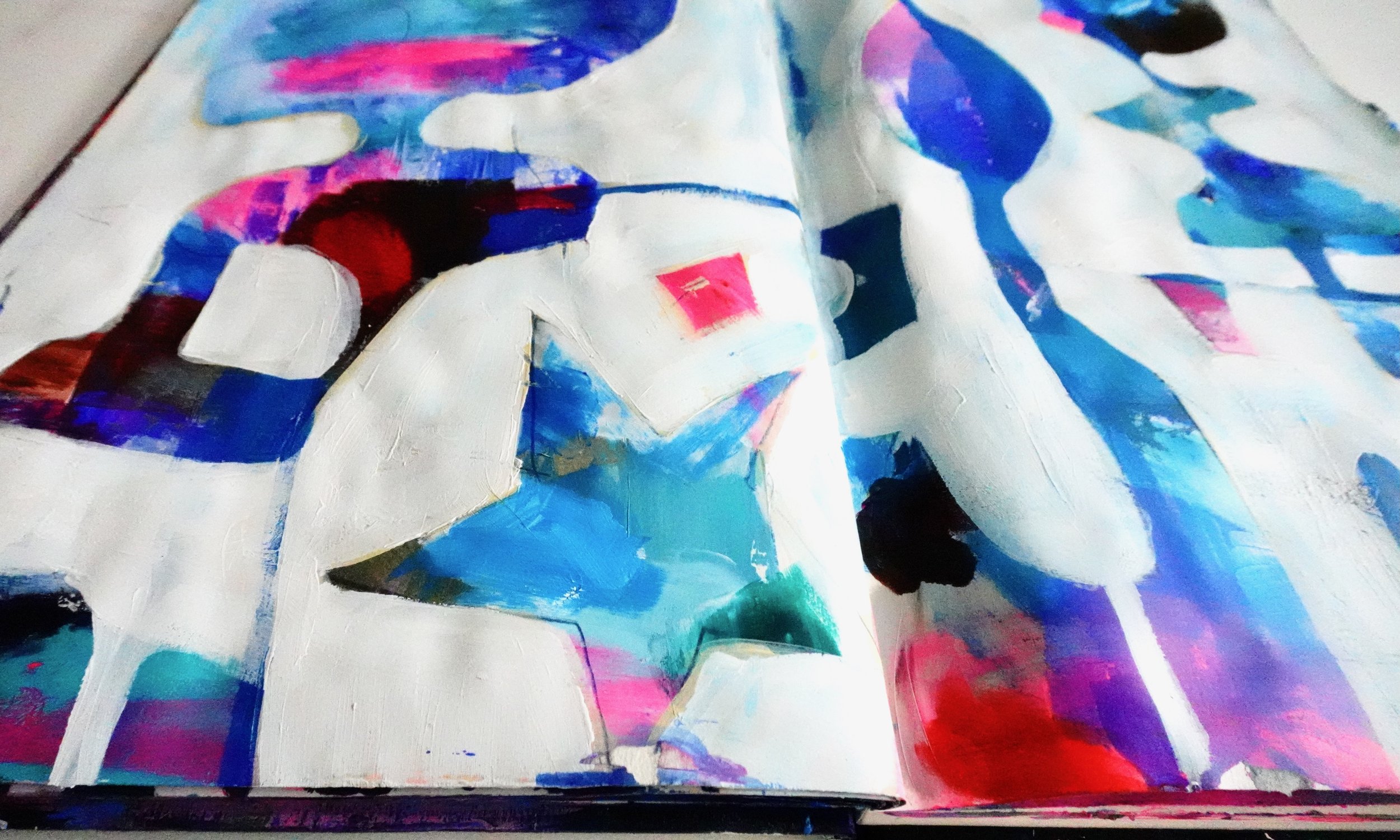
Art making ideasi
Ideas. Inspiration. A little creative mischief.
If you’re drawn to abstract and semi-abstract art, sketchbooks, colour and a little creative mischief, this is your corner of the internet.
Here you’ll find stories, videos, inspiration, art making advice and gentle nudges to help you create art that feels exciting to you.
Balancing chaos and focus in art making
Here I share some thoughts on how creativity works…
Love of Pattern
This is a love letter to pattern. Take my patterned sketchbook tour and see some art books to inspire…
Looking back to go forward…
This blog is about reviewing our work, looking back at our art with an inquisitive and curious eye…
Searching for joy and delight
A tour through my mixed media sketchbook and a speedy art demo using Indian ink
Art demo: abstract painting inspired by shapes
A practical tutorial about painting abstract pages inspired by shapes…










